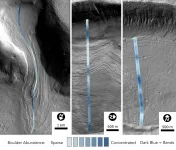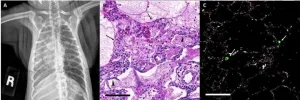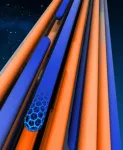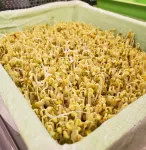A new carbon budget framework provides a clearer view of our climate deadlines
Concordia's Damon Matthews outlines a more comprehensive method of calculating how much CO2 we can emit and still meet Paris Agreement targets
2021-01-19
(Press-News.org) Just how close are the world's countries to achieving the Paris Agreement target of keeping climate change limited to a 1.5°C increase above pre-industrial levels?
It's a tricky question with a complex answer. One approach is to use the remaining carbon budget to gauge how many more tonnes of carbon dioxide we can still emit and have a chance of staying under the target laid out by the 2015 international accord. However, estimates of the remaining carbon budget have varied considerably in previous studies because of inconsistent approaches and assumptions used by researchers.
Nature Communications Earth and Environment just published a paper by a group of researchers led by Damon Matthews, professor in the Department of Geography, Planning and Environment. In it, they present a new framework for calculating the remaining carbon budget that is able to generate a much narrower estimate and its uncertainty.
The researchers estimate that between 230 and 440 billion more tonnes of CO2 from 2020 onwards can be emitted into the atmosphere and still provide a reasonable chance of limiting global warming to 1.5°C. This is the same as five to 10 years of current emission levels.
"The wide range of carbon budget estimates in the literature has contributed to both confusion and inaction in climate policy circles," explains Matthews, the Concordia Research Chair in Climate Science and Sustainability. "This is the first time we have gone through all the uncertainties and included them in a single estimate."
Uncertainties included
Matthews identifies five key uncertain parameters affecting the remaining carbon budget.
The first is the amount of observed warming that has occurred to date; the second is the amount of CO2 that has been emitted over the past 150 years; the third uncertainty is the amount of warming we are experiencing that is due to CO2 vs. non-CO2 greenhouse gas emissions; fourth is the future non-CO2 contributions to warming; and last is the amount of warming that has not yet occurred as a result of emissions already in the atmosphere.
Using a new set of equations, the researchers were able to relate these parameters to each other and calculate a unified distribution of the remaining carbon budget.
The 440 billion tonnes of CO2 is a median estimate, however, giving us a 50/50 chance of meeting the 1.5°C target. The researchers' uncertainty range runs from 230 billion tonnes before net-zero, which would give us a 67 per cent chance of meeting the target, to 670 billion tonnes for a one-in-three chance.
These numbers are based on accounting for geophysical uncertainties (those related to scientific understanding of the climate system), but not socioeconomic ones (those relating to human decisions and socioeconomic systems). The decisions humans make in the near-term matter greatly and have the potential to either increase or decrease the size of the remaining carbon budget. In the new framework, these decisions could add (or remove) as much as 170 billion tonnes of CO2 to the median carbon budget estimate.
A window of opportunity
The COVID-19 pandemic has presented humans with an opportunity, Matthews argues. The year 2020 experienced a noticeable drop in emissions from 2019 due in large part to reduced human mobility. If we are able to direct recovery investments in ways that would continue this decrease (rather than allowing emissions to rebound) we would greatly increase our chances of remaining under the 1.5°C Paris Agreement target.
Another source of cautious optimism lies with the incoming Biden administration in the United States, which has made climate change a priority.
"I am optimistic that having national leadership in the US that can mobilize efforts on climate change will make a big difference over the coming years," Matthews adds. "The momentum is shifting in the right direction, but it is still not happening fast enough."
INFORMATION:
[Attachments] See images for this press release:

ELSE PRESS RELEASES FROM THIS DATE:
2021-01-19
TAMPA, Fla. - Cells need energy to survive and thrive. Generally, if oxygen is available, cells will oxidize glucose to carbon dioxide, which is very efficient, much like burning gasoline in your car. However, even in the presence of adequate oxygen, many malignant cells choose instead to ferment glucose to lactic acid, which is a much less efficient process. This metabolic adaptation is referred to as the Warburg Effect, as it was first described by Otto Warburg almost a century ago. Ever since, the conditions that would evolutionarily select for cells to exhibit a Warburg Effect have been in debate, as it is much less efficient and produces toxic waste ...
2021-01-19
In a new paper published today in the Proceedings of the National Academies of ScienceS (PNAS), planetary geologist Joe Levy, assistant professor of geology at Colgate University, reveals a groundbreaking new analysis of the mysterious glaciers of Mars.
On Earth, glaciers covered wide swaths of the planet during the last Ice Age, which reached its peak about 20,000 years ago, before receding to the poles and leaving behind the rocks they pushed behind. On Mars, however, the glaciers never left, remaining frozen on the Red Planet's cold surface for more than 300 million years, covered in debris. "All the rocks and sand carried on that ice have remained ...
2021-01-19
ATLANTA--Early in the U.S. COVID-19 pandemic, unemployment claims were largely driven by state shutdown orders and the nature of a state's economy and not by the virus, according a new article by Georgia State University economists.
David Sjoquist and Laura Wheeler found no evidence the Payroll Protection Program (PPP) affected the number of initial claims during the first six weeks of the pandemic.
Their research explores state differences in the magnitude of weekly unemployment insurance claims for the weeks ending March 14 through April 25 by focusing on three factors: the impact of COVID-19, the effects of state economic structures and state orders closing non-essential ...
2021-01-19
The offspring of older animals often have a lower chance of survival because the parents are unable to take care of their young as well as they should. The Seychelles warbler is a cooperatively breeding bird species, meaning that parents often receive help from other birds when raising their offspring. A study led by biologists from the University of Groningen shows that the offspring of older females have better prospects when they are surrounded by helpers. This impact of social behaviour on reproductive success is described in a paper that was published ...
2021-01-19
Philadelphia, January 19, 2021 - Aged, wild-caught African green monkeys exposed to the SARS-CoV-2 virus developed acute respiratory distress syndrome (ARDS) with clinical symptoms similar to those observed in the most serious human cases of COVID-19, report researchers in The American Journal of Pathology, published by Elsevier. This is the first study to show that African green monkeys can develop severe clinical disease after SARS-CoV-2 infection, suggesting that they may be useful models for the study of COVID-19 in humans.
"Animal models greatly enhance our understanding of diseases. The lack of an animal model for severe manifestations of COVID-19 has hampered our understanding of this form of the disease," explained lead investigator Robert V. Blair, DVM, PhD, ...
2021-01-19
ATLANTA--Georgia State University biology researchers have found that infecting the nasal passages of mice with the virus that causes COVID-19 led to a rapid, escalating attack on the brain that triggered severe illness, even after the lungs were successfully clearing themselves of the virus.
Assistant professor Mukesh Kumar, the study's lead researcher, said the findings have implications for understanding the wide range in symptoms and severity of illness among humans who are infected by SARS-CoV-2, the virus that causes COVID-19.
"Our thinking that it's more of a respiratory disease is not necessarily ...
2021-01-19
HOUSTON - (Jan. 19, 2021) - Carbon nanotube fibers are not nearly as strong as the nanotubes they contain, but Rice University researchers are working to close the gap.
A computational model by materials theorist Boris Yakobson and his team at Rice's Brown School of Engineering establishes a universal scaling relationship between nanotube length and friction between them in a bundle, parameters that can be used to fine-tune fiber properties for strength.
The model is a tool for scientists and engineers who develop conductive fibers for aerospace, automotive, medical and textile applications like smart clothing. Carbon nanotube fibers have been considered as a possible basis for a space elevator, a project Yakobson has studied.
The research ...
2021-01-19
Scleroderma, a chronic and currently incurable orphan disease where tissue injury causes potentially lethal skin and lung scarring, remains poorly understood.
However, the defining characteristic of systemic sclerosis, the most serious form of scleroderma, is irreversible and progressive scarring that affects the skin and internal organs.
Published in iScience, Michigan Medicine's Scleroderma Program and the rheumatology and dermatology departments partnered with the Northwestern Scleroderma Program in Chicago and Mayo Clinic to investigate the causes of ...
2021-01-19
Researchers have revealed the first atomic structures of the respiratory apparatus that plants use to generate energy, according to a study published today in eLife.
The 3D structures of these large protein assemblies - the first described for any plant species - are a step towards being able to develop improved herbicides that target plant respiration. They could also aid the development of more effective pesticides, which target the pest's metabolism while avoiding harm to crops.
Most organisms use respiration to harvest energy from food. Plants use photosynthesis to convert sunlight into sugars, and then respiration to break down the sugars into energy. This involves tiny cell components called mitochondria and a set of five protein assemblies ...
2021-01-19
Provincial and territorial governments should set clear rules for vaccinating health care workers against SARS-CoV-2, the virus that causes COVID-19, in public and private settings, and should not leave this task to employers, according to an analysis in CMAJ (Canadian Medical Association Journal).
"An effective vaccine provided to health care workers will protect both the health workforce and patients, reducing the overall burden of COVID-19 on services and ensuring adequate personnel to administer to people's health needs through the pandemic," writes Dr. Colleen M. Flood, University of Ottawa Research Chair in Health Law & Policy and a ...
LAST 30 PRESS RELEASES:
[Press-News.org] A new carbon budget framework provides a clearer view of our climate deadlines
Concordia's Damon Matthews outlines a more comprehensive method of calculating how much CO2 we can emit and still meet Paris Agreement targets





